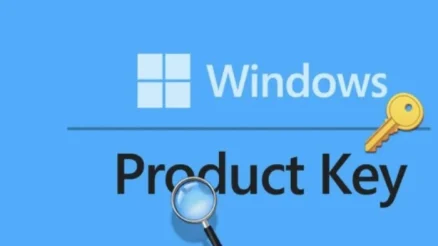You’re likely one of the millions of people who’ve downloaded cheap computer software, with statistics showing that over 70% of users opt for affordable options. While these budget-friendly solutions can cater to your basic needs, they often have trade-offs. Considering the pros and cons, you may wonder whether the cost savings outweigh the potential risks. But what are these risks, and how can you balance your budget with your need for reliable software? Examining the advantages and disadvantages of cheap computer software is vital to making an informed decision about your digital tools.
Advantages of Cheap Software
When considering cheap computer software, you’re likely looking into it because of the numerous advantages it offers. One of the primary benefits is the cost savings. Software for cheap can substantially reduce your expenses, allowing you to allocate your budget to other critical areas. This particularly benefits small businesses, startups, or individuals with limited financial resources.
Cheap software also offers flexibility, often including various versions or plans. This enables you to select the specific features you need, rather than paying for unnecessary ones. Many affordable software options are cloud-based, providing easy access and automatic updates. This eliminates the need for manual updates and reduces the risk of outdated software.
Furthermore, cheap software can be a great way to test new applications or solutions without making a substantial investment. This allows you to assess the software’s effectiveness and compatibility before committing to a more expensive version. Overall, the advantages of cheap software make it an attractive option for those seeking affordable solutions without sacrificing functionality.
Potential Security Risks
Cheap software’s cost-effectiveness and flexibility are attractive benefits, but you must also weigh these advantages against potential security risks. Using cheap computer software makes you more likely to encounter security vulnerabilities that can put your system and data at risk. This is often due to the software’s lack of robust security features, outdated encryption methods, or inadequate testing.
Cheap software may not have the same security audits and penetration testing level as more expensive alternatives. As a result, you may be exposing yourself to security threats such as malware, ransomware, and data breaches. Also, cheap software may not receive regular security updates or patches, leaving you vulnerable to new exploits.
When considering cheap computer software, assessing the potential security risks and weighing them against the cost savings is crucial. You should also research the software’s security features, read reviews from other users, and evaluate the vendor’s reputation for security. By taking these precautions, you can minimize the risks of cheap software and protect your system and data from potential security threats.
Limited Functionality and Support
You’ve likely encountered software that seems like a great deal, but ultimately falls short of your expectations. This is often the case with cheap computer software and CAD programs. One of the primary drawbacks of inexpensive software is limited functionality. While the software may be able to perform the most basic tasks, it often lacks the advanced features and capabilities of more expensive alternatives.
In addition to limited functionality, cheap computer software often comes with limited support. If you encounter a problem or question, you may not have access to reliable customer support or online resources. Using the software for critical tasks or projects can be particularly frustrating. Moreover, cheap software may not receive regular updates or maintenance, which can lead to compatibility issues and bugs down the line. Considering cheap CAD programs or other software, weigh the potential cost savings against the potential limitations and risks. It is crucial to carefully evaluate your needs and priorities before deciding.
Compatibility Issues to Consider
Compatibility issues can substantially impact your experience with cheap computer software, particularly if it needs to be better integrated with your existing systems or devices. You may need help running the software on an older operating system or on a device with limited hardware capabilities. Additionally, cheap software might not be optimized for newer systems, resulting in performance issues or crashes.
When purchasing software from a software discount store, it’s vital to consider its compatibility with your current setup. Check the system requirements and verify that your device meets the minimum specifications. It would be best to look for reviews and ratings from other users with similar systems. This can help you gauge the likelihood of compatibility issues and make a more informed decision.
Sometimes, cheap software might require manual configuration or workarounds to function properly. This can be time-consuming and may require technical expertise. It’s imperative to weigh the potential savings against the potential hassle and ponder whether the software is worth your time and effort.
Alternatives to Cheap Options
Considering the potential drawbacks of cheap computer software, it’s worth exploring alternatives that can provide better performance, reliability, and support. If you’re looking for a more cost-effective option without sacrificing quality, consider purchasing software from reputable vendors or opting for open-source alternatives. When you purchase softwares online from established vendors, you typically get access to better technical support, regular updates, and more extensive features. This can be especially important for business users or individuals with specific software needs. Additionally, many vendors offer discounts or subscription models that can make their software more affordable.
Another alternative is exploring open-source software options, often free or low-cost. Open-source software can be customized to meet your specific needs, and the community-driven development process can lead to more frequent updates and bug fixes. Some popular open-source alternatives include LibreOffice for productivity, GIMP for image editing, and VLC for media playback. Considering these alternatives, you can find software that meets your needs without breaking the bank or sacrificing quality.
Conclusion
As you weigh the pros and cons of cheap computer software, remember that cost savings can be a double-edged sword. While affordable options may cater to basic needs, they can also leave you vulnerable to security threats and limited functionality. Don’t be penny-wise and pound-foolish – consider reputable vendors, open-source software, and discounts to guarantee peak performance and security. Investing in quality software may be a more cost-effective solution in the long run.

Jerry Martinez is a professional artist. He lives in California with his family. Throughout his life, he has always been captivated by images. Naturally, he was drawn to art. So he opted to take his Bachelors Degree in Fine Arts from Otis College of Art and Design. After completing his degree, He concentrated even more into his art practice. He is a father of three children, ranging in age from 3 to 12 years old. They love outdoors activities; biking, camping, walking and playing football. Jerry Martinez is a music lover and love to listen to metallic songs.






